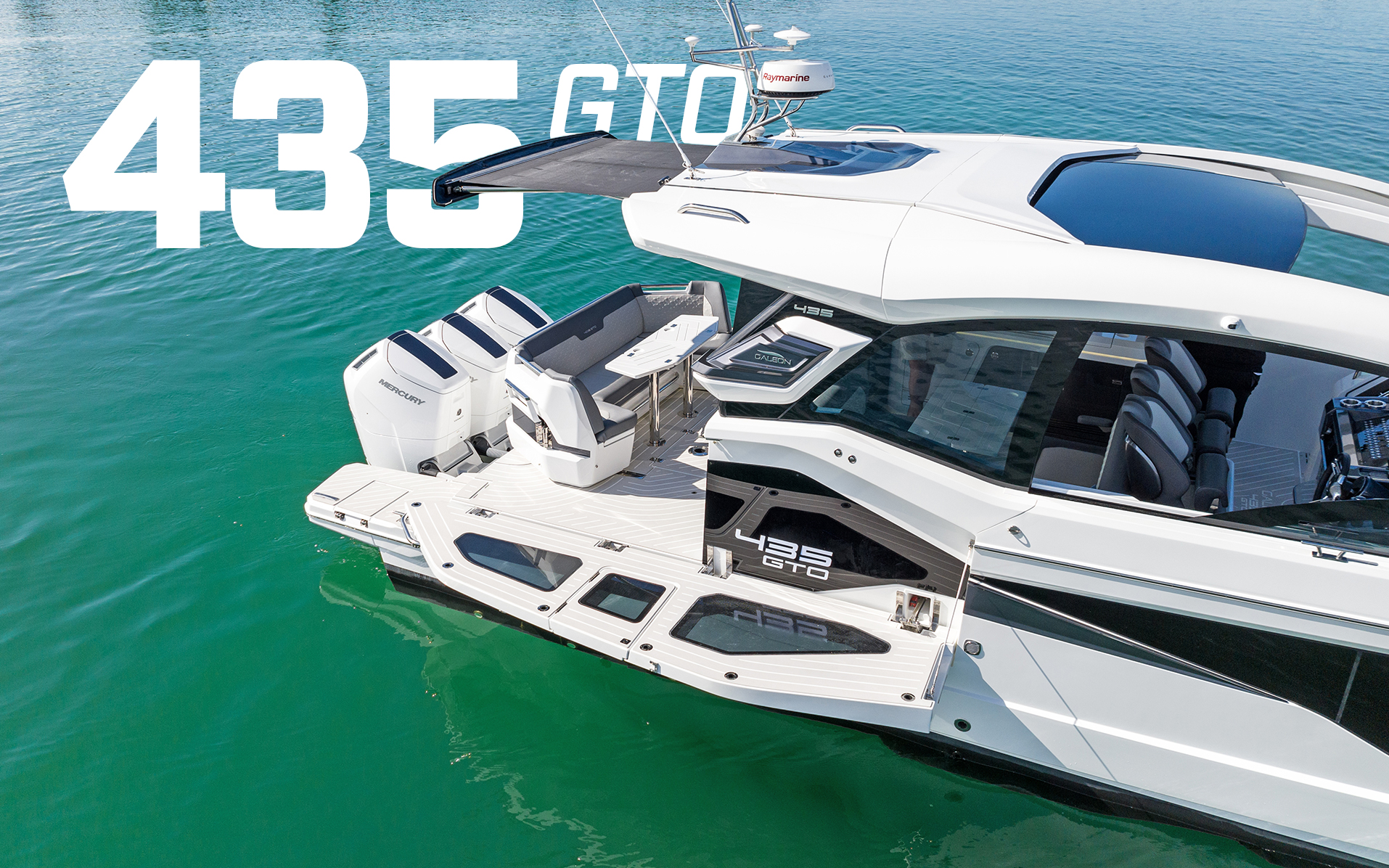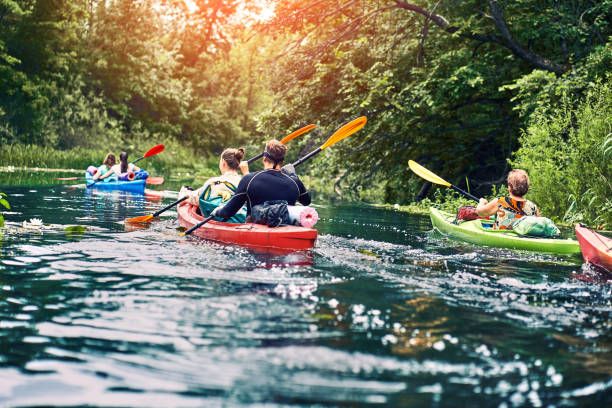Canoe vs Kayak: Essential Differences Explained
When exploring the world of paddling sports, two major watercraft types standout: the canoe and the kayak. Both have a rich history and are widely used for various recreational and competitive activities. However, there are fundamental differences between them that make them suitable for different purposes, skill levels, and personal preferences.
The primary differences between canoes and kayaks lie in their design, structure, paddling techniques, and overall performance. Canoes are generally more open and have higher sides, while kayaks boast a more streamlined design with a closed or semi-closed cockpit. These variations have a significant impact on how they are paddled, their stability, speed, and maneuverability. It is crucial for paddlers to understand the unique features and characteristics of each craft to make an informed choice and fully enjoy their paddling adventures.

Key Takeaways
- Canoes and kayaks differ in design, structure, and paddling techniques.
- Performance, efficiency, and suitability depend on individual preferences and intended use.
- Factors such as safety, comfort, and storage should be considered when choosing between a canoe and a kayak.
Basic Differences
When it comes to exploring waterways, both canoes and kayaks are popular choices. However, there are some significant differences between these two types of vessels that are important to consider when choosing which is best suited for your needs.
Firstly, the design of canoes and kayaks is quite distinct. Canoes are generally wider and have an open-top design, allowing for more storage space and accommodating multiple passengers. The paddlers sit on raised seats or kneel within the canoe, using a single-bladed paddle to propel themselves through the water. On the other hand, kayaks are sleeker and have a closed-top design, where the paddler sits inside a cockpit with their legs extended forward. Kayakers use a double-bladed paddle for propulsion, allowing for more efficient and quicker movement.
Secondly, the level of stability between canoes and kayaks differs. Canoes, with their wider bodies and open-top structure, tend to be more stable initially, making them a popular choice for families and beginners. However, they may be more difficult to maneuver in rough waters. Kayaks, with their lower center of gravity and enclosed design, can offer better secondary stability while maneuvering through waves or rapids but may require more skill and balance to prevent tipping.
In terms of usage, canoes are typically more versatile, allowing for various activities such as fishing, camping trips, and leisurely paddling. The spacious and open design allows for carrying more gear and passengers. Kayaks, due to their more streamlined design, are generally better suited for faster, long-distance paddling and exploring narrower waterways, where their ability to maneuver quickly is advantageous.
Finally, transportation and storage of these vessels can also be a factor to consider. Canoes are often heavier and bulkier, which can make transportation and storage more challenging. Kayaks, being lighter and more compact, are easier to transport and store in most cases.
In conclusion, the choice between a canoe and a kayak ultimately depends on your intended use and personal preferences. Both types of vessels offer unique experiences and cater to different skill levels and activities. Understanding the basic differences between canoes and kayaks will help you make an informed decision and select the most suitable vessel for your adventures.

Design and Structure
Canoe and kayak designs are distinct, with each providing unique advantages depending on the intended usage. Both boats feature streamlined shapes that help minimize water resistance and increase navigability. However, their sizes, cockpits, and other design features differ significantly.
In terms of size, canoes are generally longer and wider than kayaks. This offers a larger carrying capacity for passengers and gear, making canoes popular for family outings and longer trips. Additionally, the more spacious design provides better stability in calm water. Kayaks, on the other hand, are smaller and lighter, allowing for greater maneuverability and speed—attributes preferred by those seeking thrill or engaging in competitive water sports.
The cockpit design is a defining feature that sets canoes and kayaks apart. Canoes have an open-top design, which means the paddler sits or kneels inside the hull while paddling. This design makes it easy to enter and exit the canoe, as well as access stored gear during a trip. Kayaks, in contrast, usually have a closed cockpit, with the paddler sitting inside the boat. This enclosed design offers better water protection and increased control over the kayak, especially in rough conditions.
Boat designs for canoes and kayaks can also vary within their respective categories. Canoes can have flat, round, or V-shaped hulls, each with its own performance characteristics. For example, a flat hull offers stability for beginners on calm water, while a V-shaped hull allows for better tracking and speed for experienced paddlers. Similarly, kayak designs can include traditional Greenland styles, sit-on-top, and inflatable configurations.
Regarding steering and control mechanisms, kayaks often make use of rudders or skegs. A rudder is a vertically oriented blade controlled by foot pedals that help in steering the boat. Skegs, on the other hand, are fixed and submerged appendages that assist in tracking and maintaining a straight path. Canoes, conversely, often rely on paddle strokes and strategic body positioning instead of separate control mechanisms.
In summary, the design and structure of canoes and kayaks cater to various preferences and applications. Canoes tend to focus on capacity, stability, and accessible control, while kayaks prioritize maneuverability, speed, and protection in diverse water conditions. Each boat type has evolved based on specific needs, and both continue to benefit from developments in hull and paddle design technologies.

Types of Canoes and Kayaks
When it comes to paddling sports, there are various types of canoes and kayaks designed to cater for different purposes and environments. This section focuses on the most popular and widely-used types, while keeping in mind that some models can overlap or serve multiple purposes.
Types of Canoes
Canoes are known for their versatility and are usually characterized by an open-top design. Some popular types of canoes include:
- Recreational Canoes: Ideal for beginners or casual paddlers, recreational canoes are built for stability and easy use on calm waters like lakes and slow-moving rivers. They are usually made from lightweight materials.
- Touring Canoes: Designed for longer and more demanding paddling adventures, touring canoes offer better speed and efficiency. They have a sleeker hull shape for better tracking and are built with more durable materials to withstand harsher conditions.
Types of Kayaks
Kayaks come in various designs which accommodate specific uses and environments. Some popular types of kayaks include:
- Recreational Kayaks: These kayaks are built for casual paddlers who enjoy leisurely paddles on calm waters. Recreational kayaks are stable and user-friendly, ideal for beginners or those seeking relaxation.
- Sit-on-top Kayaks: With a comfortable, open cockpit, sit-on-top kayaks are exceptionally user-friendly and perfect for warm weather paddling. They offer great stability, making them suitable for fishing or diving.
- Whitewater Kayaks: Made specifically for navigating turbulent rapids, whitewater kayaks have a compact design and are highly maneuverable. Their robust construction allows them to withstand the challenges of fast-moving water environments.
- Sea Kayaks: Designed for open water and coastal expeditions, sea kayaks are built with a longer and narrower hull for better speed and tracking. They often have added features such as bulkheads and hatches for storing gear on longer trips.
- Touring Kayaks: Similar to sea kayaks, touring kayaks are designed for extended paddling trips but can also perform well on shorter outings. They provide a balance of speed, stability, and comfort.
- Sit-inside Kayaks: Sit-inside kayaks have enclosed cockpits, providing better protection from the elements and more control during paddling. This type of kayak is popular among enthusiasts seeking a more traditional paddling experience.
Each type of canoe and kayak caters to different requirements and preferences of paddlers. With a broad range of specialized designs, finding the perfect fit for one's needs and skill level can be an enjoyable journey.

Materials and Construction
Canoe and kayak construction materials play a crucial role in determining their performance, durability, and weight. Traditionally, canoes and kayaks were made from natural materials such as bark, hides, or wood. Nowadays, modern boat-building technology has introduced various synthetic materials for lighter and sturdier vessels.
One common modern material in both canoes and kayaks is polyethylene. It is a type of plastic that is durable, impact-resistant, and relatively affordable. However, polyethylene boats tend to be heavier and may degrade when exposed to UV light for extended periods.
Another popular material for both canoe and kayak construction is fiberglass. It offers a lightweight and rigid structure, which results in faster and more efficient boats. The downside is that fiberglass can be vulnerable to damage if not properly cared for and may require regular maintenance to avoid cracking and delamination.
Canoe and kayak manufacturers also use advanced composite materials such as carbon fiber and Kevlar. These materials are lightweight, strong, and resilient, making them ideal for high-performance boats. They are also more resistant to wear and tear compared to fiberglass, but come at a higher price point.
Weight is an essential factor when it comes to choosing between canoes and kayaks. Generally, kayaks are lighter than canoes due to their streamlined design and smaller size. The weight of a boat depends on its material and construction method, with modern materials usually providing lighter options.
In summary, the materials and construction techniques used for canoes and kayaks have evolved over time, resulting in vessels with a wide range of performance and durability characteristics. The choice often depends on individual preferences, intended use, and budget constraints.
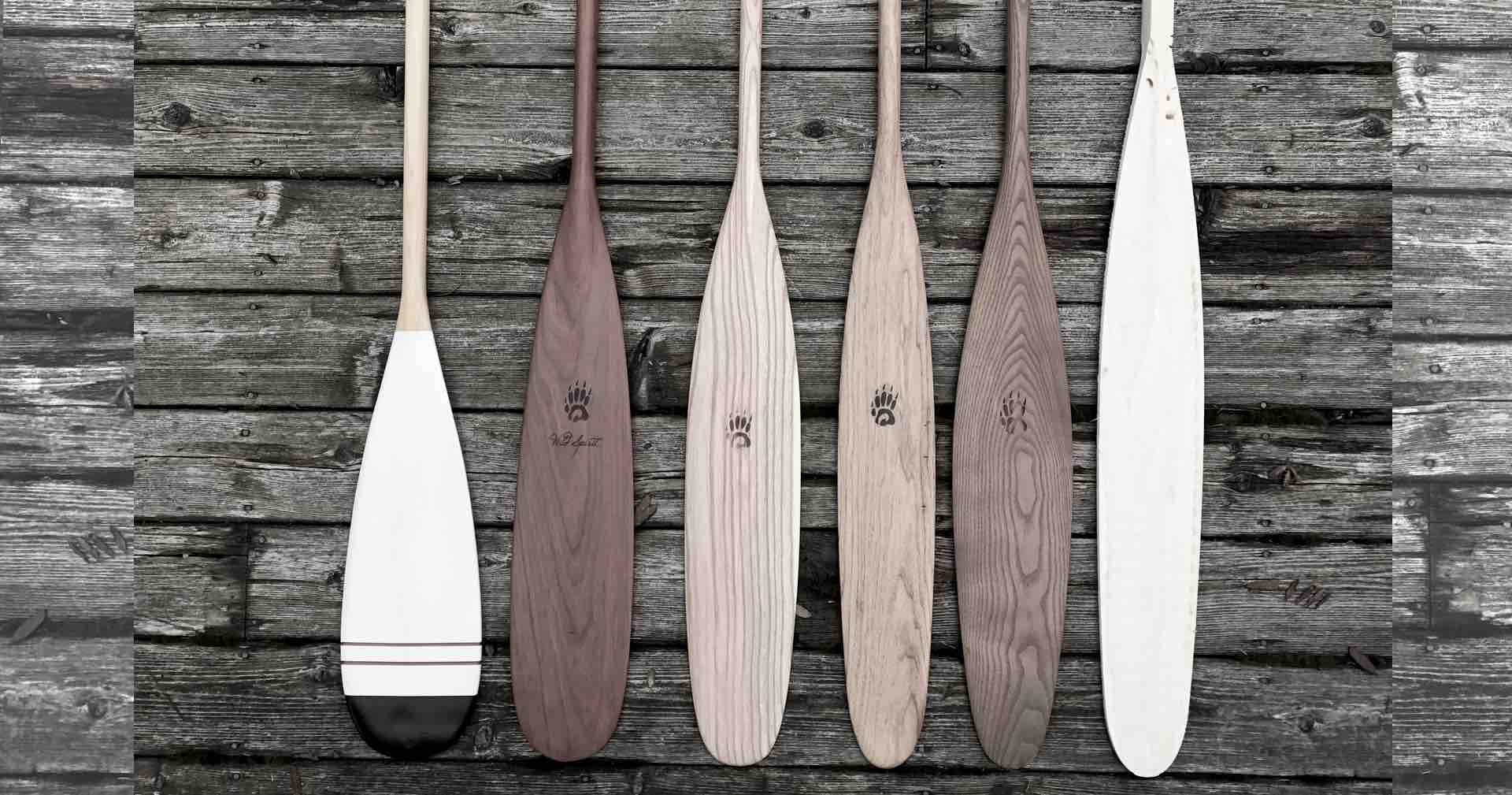
Paddles and Paddling Techniques
When it comes to paddles and paddling techniques, there are key differences between canoeing and kayaking. Canoe paddles typically have a single-bladed paddle, while kayak paddles are equipped with a double-bladed paddle.
In canoeing, the paddler generally kneels or sits on a raised seat and propels the canoe forward using the single-bladed paddle. The basic paddle strokes for canoeing include the forward stroke, sweep stroke, and the J-stroke, which helps to maintain a straight course. Additionally, there are draw strokes and pry strokes that are used for turning or moving the canoe sideways.
In contrast, kayaking involves the use of a double-bladed paddle while seated in a cockpit with legs extended to the front. The paddler uses alternating strokes on both sides of the kayak to propel it forward. Some common paddle strokes for kayaking are the forward stroke, forward sweep, reverse stroke, and reverse sweep. These strokes help in maneuvering the kayak with precision and ease.
The technique of holding a paddle also varies between canoeing and kayaking. In canoeing, the paddler grips the top part (called the T-grip) of the paddle with one hand, while the other hand is placed about halfway down the shaft. The paddler then uses their core muscles and torso rotation to make efficient paddle strokes. On the other hand, for kayaking, the paddler grips the shaft with both hands, keeping them about shoulder-width apart, and uses the rotation of the upper body, along with arm movements, to generate power in each stroke.
An advanced technique for kayaking is the Eskimo roll, which is a method of righting a capsized kayak without exiting the boat. This technique involves a combination of hip, knee, and paddle movements, allowing the kayaker to quickly and efficiently bring the kayak back to its upright position.
In summary, the main differences between canoe and kayak paddles and paddling techniques lie in the design of the paddles, the paddler's position in the boat, and the strokes used for propulsion and maneuvering. Selecting the right paddle and mastering the appropriate paddling techniques are essential for a comfortable and efficient experience, whether it is canoeing or kayaking.
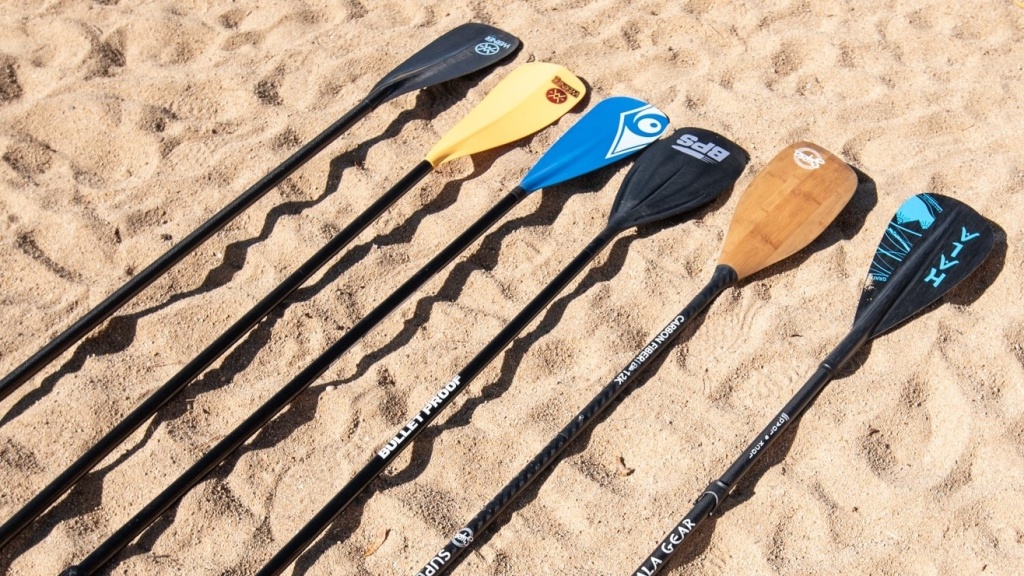
Performance and Efficiency
When comparing canoes and kayaks, it's essential to consider the factors affecting their performance and efficiency in various water conditions. These factors include speed, stability, maneuverability, ease of use, drag, and wind resistance.
In terms of speed, kayaks generally have an advantage because of their streamlined shape and lighter weight. This allows them to glide faster through the water with less resistance. In contrast, canoes are wider and heavier, which contributes to a slower pace. Additionally, the double-bladed paddle in kayaking allows for more efficient propulsion than the single-bladed paddle used in canoeing.
Stability is another crucial aspect when comparing these two boats. Canoes, with their large open hull and flat bottom, offer more initial stability and make it easier for passengers to move around. However, this may also make them more susceptible to tipping in rougher water. On the other hand, kayaks have a more rounded hull and lower center of gravity, providing better secondary stability to handle challenging water conditions. Despite this, their initial stability might be lower, making it trickier for beginners to maintain balance.
Maneuverability also plays a significant role in performance and efficiency. Kayaks, with their lower profile and lighter weight, tend to respond quicker to directional changes and can turn more easily in tight spaces. Canoes, being larger and heavier, might require more effort to change direction and maneuver through narrow waterways.
The ease of use is subjective, varying from person to person. However, kayaking might be easier to pick up for most people because of the double-bladed paddle and symmetrical strokes. Additionally, the sitting position in a kayak is more natural, allowing for better power distribution and energy conservation. In contrast, canoeing typically demands a higher level of skill and technique to control the boat efficiently, especially while solo paddling.
Drag in both canoes and kayaks arises from their contact with the water. Generally, kayaks have a lower resistance due to their slim hull design, translating to better performance. Canoes, with their broader shape, experience higher drag, which might hamper their speed and efficiency.
Wind resistance is yet another consideration. Kayaks, with their low profile, suffer less from wind exposure, improving their performance on windy days. Conversely, the high sides of a canoe act as sails, making them more susceptible to be pushed off course by strong winds.
In conclusion, kayaks usually outshine canoes in terms of speed, maneuverability, and efficiency, while canoes offer more initial stability and capacity. However, the final choice depends on the intended use and personal preference of the paddler.

Uses and Activities
Canoeing and kayaking are versatile water sports that offer a wide range of uses and activities for enthusiasts of all levels. Whether you are interested in recreational paddling, fishing, or touring, both canoes and kayaks have unique qualities that make them suitable for various water conditions and personal preferences.
Recreational paddling is a popular activity for both canoe and kayak users. Beginners often find canoeing to be more stable and easier to learn, providing a comfortable platform for family outings and leisurely paddles. Kayaking, on the other hand, allows for greater agility and speed, making it a favorite choice among adventure-seekers and more experienced paddlers.
Fishing and hunting enthusiasts often prefer canoes due to their stability and larger carrying capacity, allowing for the transport of equipment and supplies. Additionally, canoes can easily accommodate multiple passengers, making them an ideal choice for group expeditions.
Whitewater challenges are best tackled in kayaks, as they offer improved maneuverability and the ability to navigate through rapid currents and tight passages. Whitewater kayaking requires specialized skills and equipment that differ from flatwater paddling, so it is essential to receive proper training before attempting this thrilling water sport.
Touring and exploring large bodies of water such as lakes or coastal areas are common activities for both canoes and kayaks. For long-distance trips, sea kayaking provides efficient hull designs that enable the paddler to cover vast distances efficiently. Canoeing, however, offers increased storage options for overnight camping and multi-day treks, as well as being better suited for navigating the boundary waters.
Exercising on the water is a great choice with either a canoe or a kayak. While paddling, you engage your core and upper body muscles, making it an excellent low-impact workout that builds strength and improves cardiovascular fitness.
In summary, canoes and kayaks each have their advantages and particular uses, catering to various activities and skill levels. Whether you're a beginner looking for a relaxing paddle or an experienced adventurer tackling whitewater rapids, both options provide countless opportunities to explore and enjoy the waterways.

Safety and Comfort
When comparing canoes and kayaks, safety and comfort are crucial factors to consider. Both of these watercraft have their advantages and disadvantages, but ultimately the choice will depend on personal preferences and intended activities.
Canoes tend to have a higher degree of initial stability, thanks to their wider, flat-bottomed structure. This can make them an attractive option for beginners or families with young children. On the other hand, kayaks have a lower center of gravity, which results in a higher degree of secondary stability when leaning or edging. Experienced paddlers might prefer this, as it allows for greater control and maneuverability.
In terms of comfort, canoes offer spacious seating areas with the flexibility to adjust positions or even stand up, making them ideal for long trips or fishing excursions. Kayaks, specifically sit-in kayaks, have more confined spaces that can be restricting for some individuals. That being said, sit-on-top kayaks provide more room for movement and allow for easier entry and exit.
Seating plays a major role in comfort for paddlers. Most canoes come with bench-style seats, whereas kayaks are typically equipped with more ergonomic seats, sometimes even including adjustable backrests. Proper seating in a kayak can enhance safety by ensuring that the paddler is well-supported and balanced, as highlighted in the Kayaking book.
Getting in and out of canoes is generally more straightforward due to their larger openings. Kayakers might need additional practice to enter and exit smoothly without capsizing, especially in sit-in kayaks.
Ultimately, safety and comfort in both canoes and kayaks depend on the skills and preparedness of the paddler, as mentioned in the Canoe and Kayak Handbook. Personal factors such as body size, experience level, and intended usage also play a role. Paddlers should consider these aspects when choosing between a canoe and a kayak to ensure they have a safe, comfortable, and enjoyable experience on the water.
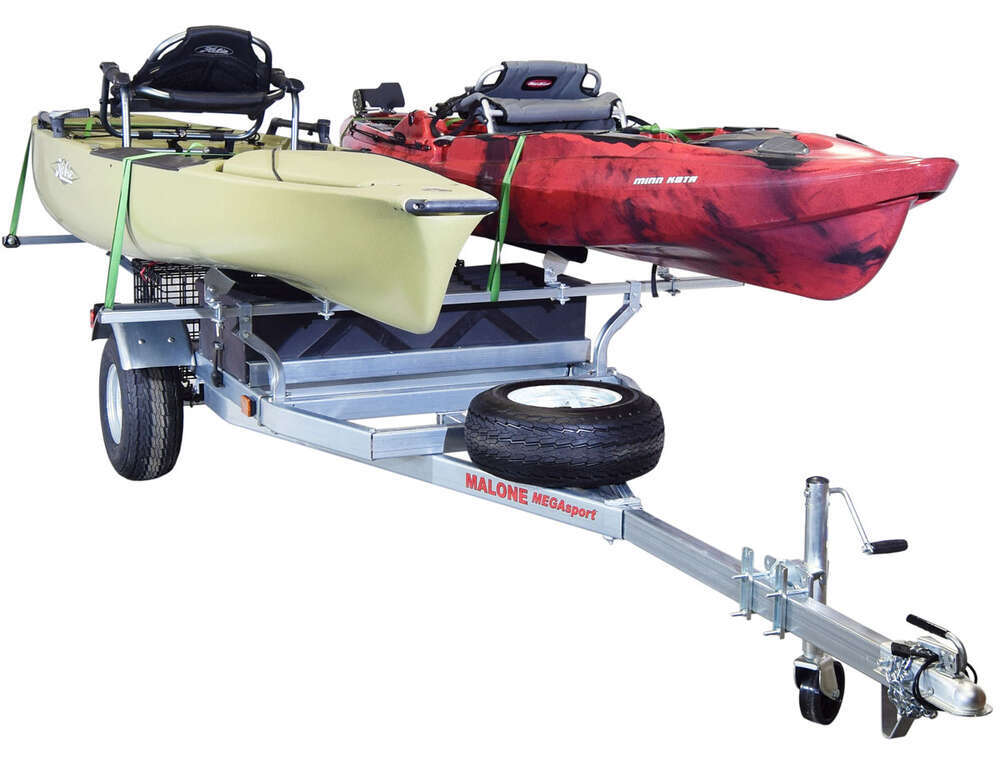
Storage and Transportation
When it comes to storage and transportation, both canoes and kayaks have their advantages and challenges. Canoes are generally larger and heavier compared to kayaks, which can make them more difficult to transport and store. However, their open design allows for more gear storage, making them a popular choice for longer trips or group outings.
The transportation of a kayak is often easier due to its smaller size and lighter weight. Many kayaks can be lifted by a single person, and they typically fit on roof racks or inside pickup trucks with ease. Additionally, specialized kayak carriers are available to facilitate transportation. On the other hand, canoes usually require two people to lift and load onto vehicle racks or trailers. For longer trips, canoe wheels or carriers may be necessary to assist with portages, where the boat must be carried over land between bodies of water.
In terms of storage, the compact size of a kayak makes it more convenient for storage in small spaces. They can be easily hung on wall racks, mounted on storage stands, or even placed on shelves. Some kayaks have removable sections, which can further enhance their storability. Canoes, being larger, will require more space to store and may necessitate the use of specially designed canoe racks. Appropriate planning must account for the storage needs of either boat type to ensure the longevity of the vessel.
When considering gear storage, canoes provide a distinct advantage. Their open design and larger size allow for more equipment and supplies to be carried during a trip, which can be especially useful for extended paddling adventures. Kayaks are more limited in their storage capacity, usually offering only a few watertight compartments. Therefore, careful planning is essential for kayak trips to maximize the use of available storage.
In conclusion, both canoes and kayaks have their own unique storage and transportation considerations. Paddlers must evaluate their individual needs and resources in order to determine the best choice for their paddling adventures.

Disciplines and Competitions
In both canoeing and kayaking, there are several disciplines and competition types, including racing, sprint, slalom, and freestyle events. Each discipline has its unique characteristics and physical demands for the participating athletes.
Racing is a common discipline in both canoe and kayak sports, often taking place on flat water or white water courses. The main goal is to cover a specific distance in the shortest time possible. Identified as canoe sprint and kayak sprint, these events take place over distances of 200m, 500m, and 1000m, and are part of the Olympic program.
Slalom is another discipline found in both sports, where athletes navigate through a series of gates placed on the river course while combating the river's current. The objective is not only to complete the course in the fastest time but also to pass through all the gates correctly. Slalom competitions are part of the Olympic program for both canoe and kayak events.
Freestyle is a more creative and expressive discipline, mainly involving kayaking. Athletes perform various tricks and maneuvers, such as spins, flips, and aerials, on a stationary wave or hole typically found in rivers. Freestyle performance is judged on factors like technique, variety and style, and difficulty of the moves performed. A study showed that upper body strength plays a significant role in freestyle kayaking performance.
Understanding the differences between canoe and kayak disciplines and competitions enables athletes to focus on specific training aspects and physical development for optimal performance. The choice of discipline often depends on factors like an athlete's personal preference, physical abilities, and body composition.
In conclusion, canoeing and kayaking offer a variety of disciplines and competitions that cater to a wide range of skill sets, interests, and athletes. Whether it is racing in a sprint event, challenging oneself in a slalom course, or expressing creativity through freestyle moves, both sports provide exciting opportunities for everyone to enjoy.

History of Canoes and Kayaks
Canoes and kayaks have played significant roles in human history, particularly in terms of transportation and exploring bodies of water. Canoes generally originated from ancient cultures, where they were primarily used for fishing, transportation, and even warfare. The oldest discovered canoe is the dugout canoe, which dates back to around 8,000 years ago. These canoes were made from hollowed-out tree trunks, with the use of simple tools for construction.
On the other hand, kayaks have a more recent origin but were still used for various tasks in different parts of the world. Some native cultures used kayaks for fishing, hunting, and setting up fishing nets. The modern sport of kayaking began to grow in popularity in the early 20th century, and competitive kayaking is now a common fixture in the world of water-based sports.
Canoes and kayaks can be distinguished from one another in terms of their design and the paddling technique used to maneuver them. Canoes generally have an open-top design, allowing the paddler to kneel or sit on a raised seat. The paddlers in a canoe use a single-bladed paddle to propel the boat forward. In contrast, kayaks have a more enclosed design, where the paddler sits on the bottom of the boat with their legs stretched out in front of them. Kayak paddlers use a double-bladed paddle to move the boat through the water.
Over time, both canoes and kayaks have evolved to meet the needs of various activities and environments. Racing, touring, and white-water navigation are just a few of the many facets of canoeing and kayaking. The technology used in canoe and kayak construction has also improved, with the introduction of lighter materials like fiberglass, carbon-fiber, and plastic, which offer greater durability and performance capabilities.
In conclusion, the history of canoes and kayaks is rich in cultural significance and technological advancements. Their continued use and development in modern society highlight their importance in the world of sports, recreation, and exploration.

Frequently Asked Questions
What are the main differences between a canoe and a kayak?
A canoe is an open and often larger boat, in which paddlers use a single-bladed paddle to move through the water. Canoes are generally designed for calm water conditions and are ideal for leisurely paddling or transporting cargo. A kayak, on the other hand, is typically more streamlined and enclosed, with paddlers using a double-bladed paddle to navigate through the water. Kayaks are designed for a variety of conditions, including whitewater and sea kayaking.
Which is better for beginners: canoe or kayak?
Both canoes and kayaks have their own learning curves, but kayaks are generally considered easier for beginners. Kayaks offer more stability and control, which can make newcomers feel more comfortable during their first outings. However, paddling techniques differ between canoes and kayaks, so it is important to try both and decide which one suits your personal preferences and abilities best.
Are canoes or kayaks more stable?
In general, canoes have a wider hull and higher center of gravity, making them more stable on calm waters. Kayaks are more streamlined and have a lower center of gravity, which increases stability in rough waters or during sudden movements. The type of stability a person is looking for may vary depending on the purpose such as recreational use or fishing, so it is crucial to choose the appropriate boat for the desired activity.
Which is more suitable for long trips: canoe or kayak?
Both canoes and kayaks can be suitable for long trips, depending on your personal preferences and trip requirements. Canoes have more storage capacity and are better for transporting heavy cargo, making them ideal for long camping trips. Kayaks, on the other hand, are lighter and can be more efficient to paddle over long distances, especially in dynamic water conditions like ocean currents or waves.
Which is better for family outings: canoe or kayak?
Canoes are generally more suitable for family outings as they offer greater space for multiple passengers and gear. Additionally, their open design allows for easier communication among family members, making it a more social experience. Tandem kayaks can accommodate two or more passengers, but their enclosed design and limited space may not be ideal for families with smaller children or larger groups.
Is a canoe or kayak more suitable for seniors?
The suitability of a canoe or kayak for seniors largely depends on the individual's personal preferences, physical capabilities, and the type of water activities they enjoy. Canoes tend to offer more stability and comfort, while kayaks require more balance and agility. It's important for seniors to consider their mobility, fitness level, and potential accessibility issues when deciding between a canoe and a kayak.
Charlie is Editor-in-Chief of Sea Magazine





